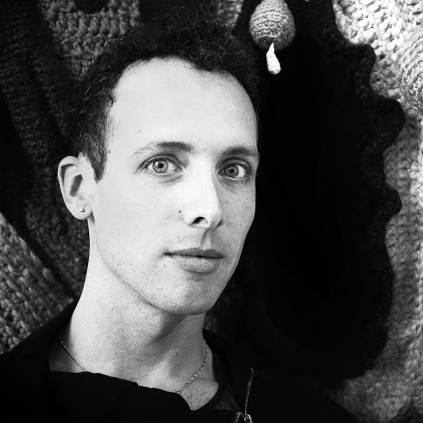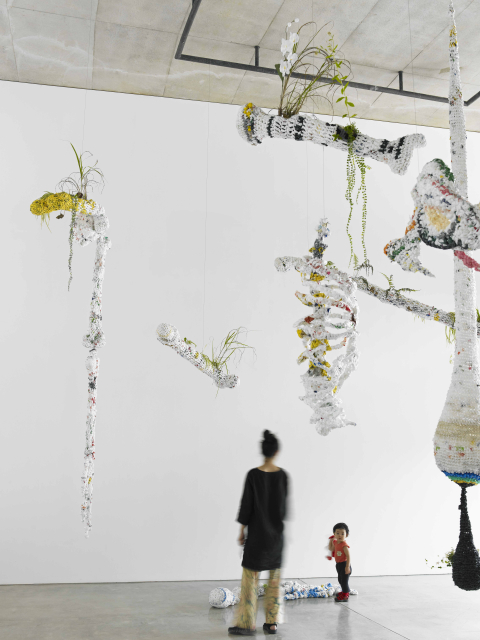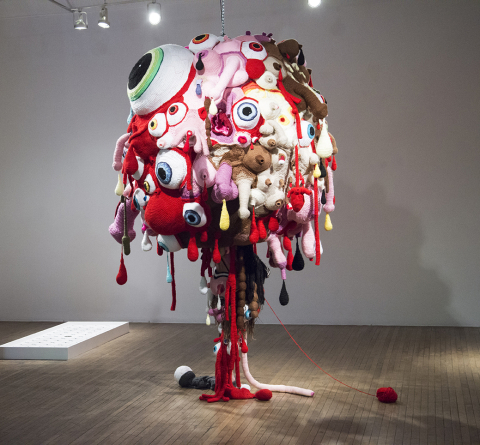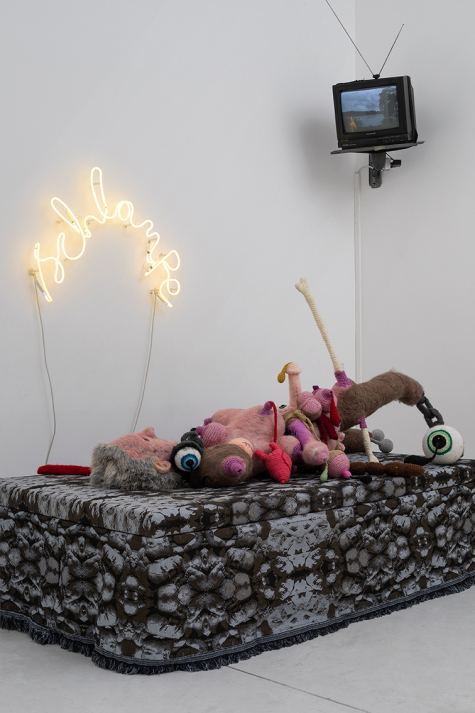Gil Yefman

works


Tumtum
2012 knitting, Faraday cage, Sound, additional performance 200X200X200 cm…(Not solely the Lepers, bull all who corrupt man must cry out for all to hear, that they are unclean, so that they will be given wide berth “and shall cry, Unclean, unclean”, Leviticus 13:45. The unclean informs that he is unclean. And Tumtum and Androgynous tears and rips and covers his upper lip as well, for he is in Doubt.) Leprousy Halacha 10 (Jewish Law), Mishna L’Torah, Rambam.
Etymologically, the source of the word ‘Tumtum’ is a combination of sealed and unclear, ambiguous, used to describe an androgynous with unclear genitalia – meaning genitalia that perform and especially look different from others’.
Thanks to Rambam’s Halachaic deliberations, especially regarding the laws of Kashrut, Tumtum has acquired the dubious phonetic connotation of Tum’aa...

Hedgerow
2019Read morewool, acrylic, felt, iron thred, gas pipes, embroidery threads
700X250X50 cm
This work was created with the help of 265 volunteers and Kuchinate.

Field Slave
2018Read moreWool, acrylic, hair, Jacquard fabric, neon, two-way mirror, a bed, surveillance camera, monitor


Tumtum
2012 knitting, Faraday cage, Sound, additional performance 200X200X200 cm…(Not solely the Lepers, bull all who corrupt man must cry out for all to hear, that they are unclean, so that they will be given wide berth “and shall cry, Unclean, unclean”, Leviticus 13:45. The unclean informs that he is unclean. And Tumtum and Androgynous tears and rips and covers his upper lip as well, for he is in Doubt.) Leprousy Halacha 10 (Jewish Law), Mishna L’Torah, Rambam.
Etymologically, the source of the word ‘Tumtum’ is a combination of sealed and unclear, ambiguous, used to describe an androgynous with unclear genitalia – meaning genitalia that perform and especially look different from others’.
Thanks to Rambam’s Halachaic deliberations, especially regarding the laws of Kashrut, Tumtum has acquired the dubious phonetic connotation of Tum’aa...

Hedgerow
2019Read morewool, acrylic, felt, iron thred, gas pipes, embroidery threads
700X250X50 cm
This work was created with the help of 265 volunteers and Kuchinate.

Field Slave
2018Read moreWool, acrylic, hair, Jacquard fabric, neon, two-way mirror, a bed, surveillance camera, monitor
